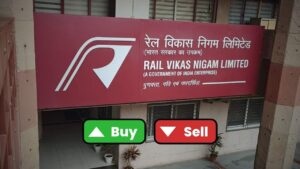Effectively managing operations and processes is critical for enterprises to thrive in the market, and in an era where cloud computing has become the backbone of enterprise operations, optimizing SAP systems for cloud environments has emerged as an important and popular challenge for organizations. Sreenu Maddipudi, a distinguished expert in cloud-based SAP optimization, has been engaging in activities to address some of the challenges of making SAP effective and to make remarkable improvements in system performance while significantly reducing operational costs.
Over the course of his career, he has led several initiatives that focused on optimizing the performance of SAP systems in cloud environments, particularly in SAP S/4HANA on AWS, Azure, and Google Cloud. One of his key achievements was leading a project to optimize the performance of a multi-national retail client’s SAP S/4HANA environment on AWS. Through effective resource management and implementing cloud-native best practices, he and his team achieved a 40% improvement in processing speeds, while reducing cloud costs by 20%.
Additionally, he has played a significant role in designing and implementing performance monitoring frameworks for cloud-based SAP environments. These frameworks can enable testing performance and prevent bottlenecks. His efforts in integrating analytics and automation tools into these frameworks have led to efficient resource utilization for performance.
By leveraging cloud-native monitoring tools like AWS CloudWatch and Azure Monitor, he helped streamline the SAP performance by reducing the time required for issue identification and resolution by 30%. To understand the unique business needs, he worked with various teams from various functions (development, business intelligence, and infrastructure) to ensure SAP functioned optimally.
Apart from contributing to his organisation, Maddipudi’s expertise has proven to be valuable in the field of SAP optimization itself, for eg- for a large retail company on Microsoft Azure by utilizing Azure’s native services, including Virtual Machine scale sets, Load Balancer, and Azure Monitor, he and his team increased system performance by 30%, particularly during the peak sales periods, when it is required the most ensuring that transaction speeds and order processing were not impacted.
For another major financial institute, they worked on optimizing SAP HANA running on the cloud. For this, they worked on database indexing, memory management, and workload distribution, achieving up to a 40% reduction in response time for real-time data processing in the cloud.
Some of the byproducts of his efforts have been a 30% improvement in system performance by optimizing SAP, reduced operational costs by 25% and a minimized downtime during the migration process, ensuring a 99.9% uptime for critical SAP systems.
To ensure the optimal functioning of the SAP system, they had to do a thorough analysis of system performance and identify bottlenecks, which they were able to overcome by implementing best practices and leveraging cloud-native tools. Also, the migration process was another challenge for them as it was to be done by ensuring minimal downtime and data integrity. Through meticulous planning and execution, they successfully managed to do the migration process.
Looking at the current trends, Maddipudi believes that the trend will move towards more automated and AI-driven solutions for performance optimization. These technologies will further streamline processes and improve system responsiveness and prediction. His suggestion for future and current projects is to prioritize continuous monitoring to ensure that the SAP systems perform at their best in the cloud environment so the enterprises can streamline their operations smoothly and function at the optimal level.












